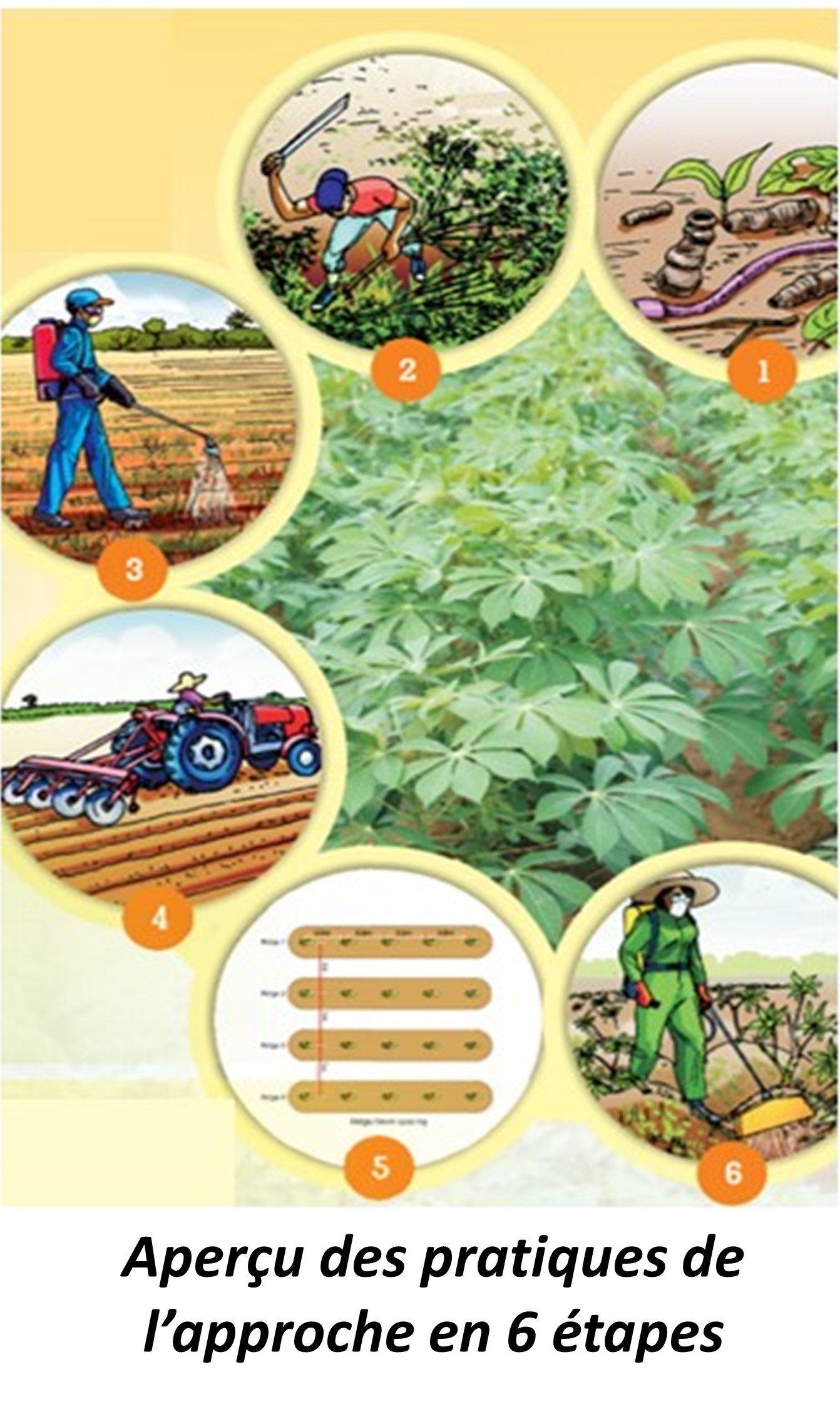“Six Steps” cassava weed management
Summary
Weed encroachment of fields is a major constraint in the production of cassava across Sub-Saharan Africa because farmers generally do not take adequate and timely measures to keep weed covers low. The planting arrangement of cassava and its slow canopy development make the crop susceptible to encroachment by weeds in the first 10-16 weeks of cultivation. When weeds are abundant on farms they guzzle up lots of nutrients and water from the soil, which is severely reducing the yield of cassava roots. The “Six Steps” approach is a complete package for weed management that addresses multiple key control measures, including site selection, weed identification, herbicides application, tillage operations, plant spacing, and post-emergence weeding. Cassava farmers in Nigeria who were trained in “Six Steps” weed management by large-scale dissemination programs have been harvesting fresh yield root yields of more than 20 ton/ha in comparison to the national average of 9 ton/ha.
About the Solution
“Six Steps” cassava weed management offers a decision support framework and recommendations on various control measures in line with prevalent conditions which is helping farmers to keep crops free of weeds and realize high root yields. The specific steps involve: 1) site selection, 2) slashing of vegetation, 3) land clearing with herbicides, 4) ploughing and ridging of fields, 5) planting and pre-emergence herbicide application, and 6) post-emergence manual and chemical weed control.
The “Six Steps” weed management strategy is tailored to the agricultural contexts and available resources of small-scale farmers, and can be applied in all cassava growing areas of SSA – from sub-humid savannahs and highlands to humid lowlands. Multiple forms of weed encroachment, i.e., grasses, broad leaves, and bush (trees), and different levels of coverage and height, are addressed in the stepwise approach that give cassava producers the opportunity to better align practices with prevalent conditions on their cropland.
Different types of equipment and herbicides are needed for implementing the “Six Steps” weed management strategy. Farmers can use simple, low-cost types of gear like slashers, hand hoe and manual knapsack sprayers, or -if available- tractor mountable tools for land clearing and herbicide application.
The “Six Steps” strategy is implemented using a compact, two-page document which takes farmers through a series of questions that guide them to the appropriate weed management and planting practices for cassava production under diverse conditions on farms. Procedures for land clearing, tillage, planting, and pre- and post-emergence weed control are described in detail through pictures and text which make it easy to follow. Site selection and land clearing typically starts 2 weeks before planting, and weed control through chemical and physical measures is carried out until cassava crops are fully shading the soil beneath, which can take up to 20-24 weeks after planting. To determine the suitable type of herbicide product, and its application rate and method, farmers can make use of the freely-available calculator applications for cassava crops (featured here on the ProPAS webportal). Inputs of nitrogen, phosphorus and potassium fertilizers have to be applied at recommended dosages and times during cultivation for achieving full root yield potential.
Commercialization
Commercially available
Solution Images
Institutions

Accompanying Solutions
Selective herbicides, Mechanized weeders, Inorganic fertilizers


